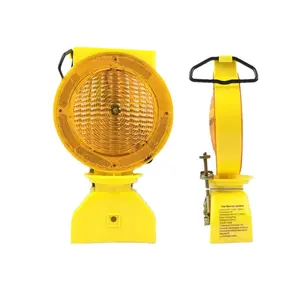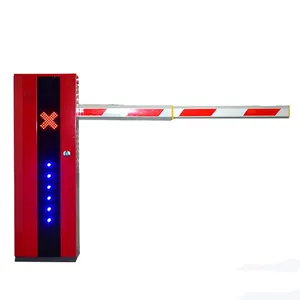A led traffic light is an essential component in modern traffic management, utilizing light-emitting diodes (LEDs) to signal and control the flow of traffic at intersections, pedestrian crossings, and other roadway areas. These devices are designed to ensure the safety and efficiency of both vehicular and pedestrian traffic. The led traffic signal light has become increasingly popular due to its energy efficiency, long lifespan, and high visibility, even under adverse weather conditions.
Types of LED Traffic Lights
The spectrum of led traffic lights encompasses a range of types, each tailored to specific signaling needs. Single-color lights are the most common, providing straightforward stop and go signals. Pedestrian signals often feature pictograms and countdown timers for enhanced safety. Multi-color lights, such as the 200mm Multi Color Led Signal, offer more complex signaling options for various traffic scenarios. Integrated systems like whelen traffic advisors combine multiple signal types to manage traffic flow effectively. Auxiliary signaling devices, including road stud lights, traffic cone lamps, and traffic wand flashlights, provide additional visual cues to support the primary traffic signals, especially in areas requiring heightened attention or during emergency situations.
Structure and Operation of LED Traffic Lights
The intricate structure of a led traffic light module is engineered for optimal performance and durability. At the core of the module are the LED bulbs, which are arranged in patterns to form the familiar traffic signals. These bulbs are encased in a clear, robust polycarbonate lens that protects them from the elements while ensuring the light is visible from a distance. Supporting the LEDs is a network of electronic circuits that manage the timing and intensity of the lights, often synchronized with other traffic signals to maintain a cohesive traffic control system. In models designed for energy efficiency, solar panels may be incorporated to harness solar energy, storing it in batteries to ensure a reliable power supply, even during power outages or in remote locations.
Materials and Properties of LED Traffic Lights
The choice of materials for led traffic lights is critical for their performance and longevity. Polycarbonate (PC) is favored for the lens due to its clarity, impact resistance, and ability to withstand UV exposure without yellowing. Aluminum is often used for the body and heat sink components, providing excellent thermal management to prevent overheating, which can extend the life of the LEDs. ABS plastic, known for its toughness and electrical insulation properties, is typically used for the housing of the control circuits. These materials are not only chosen for their physical properties but also for their environmental resistance, ensuring that the lights can operate reliably in a wide range of temperatures and weather conditions.
Business Usages and Applications of LED Traffic Signals
Led traffic lights are integral to the infrastructure of numerous industries. In urban planning, they are critical for intersection control, reducing congestion and improving traffic flow. For roadway safety, they are deployed in school zones, pedestrian areas, and high-accident locations to enhance visibility and compliance with traffic laws. In the construction industry, temporary traffic signals and road cone lights are used to safely redirect traffic around work zones. For logistics and transportation businesses, traffic signals at warehouse entries and freight terminals help to prevent accidents and streamline vehicle movement. The adaptability of LED traffic signals to different environments makes them invaluable for maintaining continuous and orderly traffic, which is essential for the economic vitality of business operations.
Functions of LED Traffic Signal Lights
The primary function of a led traffic signal light is to convey traffic status clearly and promptly to prevent accidents and ensure smooth traffic flow. Advanced models are equipped with sensors and connectivity that enable them to adapt to traffic conditions, such as extending the green light duration during heavy traffic or flashing warnings in response to nearby emergency situations. The emergency vehicle strobe function is specifically designed to clear paths for emergency responders, thereby reducing response times and potentially saving lives. Additionally, pedestrian signals are designed to provide clear walking and waiting cues, often accompanied by audible signals for the visually impaired, ensuring inclusivity and safety for all road users.
Features of LED Traffic Lights
The distinct characteristics of led traffic lights include their exceptional luminance and directional precision, which ensure that the signals are visible from various angles and distances. The energy efficiency of LEDs means that they consume significantly less power than traditional incandescent bulbs, leading to cost savings and environmental benefits. Many LED traffic signals are also equipped with self-diagnostic features that alert maintenance personnel to malfunctions, which is crucial for timely repairs and consistent traffic management. The modular design of many LED traffic light systems allows for easy upgrades and replacements, ensuring that the traffic control systems can evolve with changing technological standards and regulations.
Benefits of LED Traffic Signal Lights
The adoption of led traffic lights brings numerous advantages. Their low power consumption translates into lower electricity bills and a reduced need for power infrastructure, particularly in solar-powered setups. The longevity of LEDs means fewer replacements and less waste, contributing to sustainability goals. The reliability of LED lights reduces the frequency of traffic disruptions due to signal outages, thereby enhancing overall road safety. Furthermore, the instant on-off capability of LEDs minimizes the transition time between signals, which can help to reduce driver confusion and the potential for accidents.
How does an LED traffic light ensure roadway safety?
An LED traffic light ensures roadway safety by providing clear and unmistakable signals to drivers and pedestrians. The high-intensity LEDs used in these lights are visible from a long distance and are not easily obscured by environmental factors such as fog or rain. The rapid on-off capability of LEDs also allows for quicker response times from drivers, reducing the likelihood of accidents at intersections.
What are the considerations for choosing the right LED traffic signal light?
When selecting the right LED traffic signal light, considerations include the specific application (e.g., intersection, pedestrian crossing), the required visibility range, energy efficiency, and whether solar-powered options are preferable. The compatibility with existing traffic control systems and the ease of maintenance are also important factors. Additionally, the IP rating should be considered to ensure the light's durability against environmental factors.
How to maintain and extend the lifespan of LED traffic lights?
To maintain and extend the lifespan of LED traffic lights, regular inspections should be conducted to check for any signs of damage or wear. Cleaning the light covers to remove dirt and debris can prevent dimming of the lights. It is also important to ensure that the power supply is stable and that any solar panels used are kept clean to maintain efficient energy absorption. Following the manufacturer's guidelines for maintenance will help in preserving the optimal functionality of the lights.






























 浙公网安备 33010002000092号
浙公网安备 33010002000092号 浙B2-20120091-4
浙B2-20120091-4